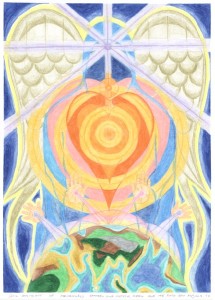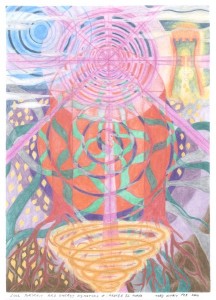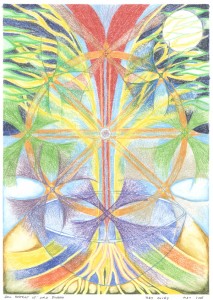One of the most basic and fundamental meditation practises in the Zen tradition, especially for those in the Soto Zen school is called “shikantaza”, or “just sitting”, and it is this meditation form that I want to outline in this article.
So, the idea with shikantaza or just sitting meditation is that through just sitting you will start to develop and refine your awareness. When you sit down quietly and still your mind a little, you discover that there are basically five main aspects of your awareness. These are:
1) Awareness of your environment and senses, meaning the surroundings around where you are sitting, and the external sights, sounds and sensations that you can perceive with your five senses.
2) Awareness of your body and breathing, or your basic physical body awareness.
3) Awareness of the stream of thoughts, images and feelings within your mind
4) Awareness of the natural inner space and silence of your consciousness that surrounds and contextualizes the thoughts and feelings. To use an analogy, if you think of your thoughts and feelings as being like clouds, the space and silence in your mind is like the sky itself.
5) Awareness of awareness itself, that is to say the ever present witnessing aspect of our awareness that is present and observes the objects present in levels 1-4. To continue the analogy, if your thoughts are like clouds, and the formless space of your consciousness is like sky, then your witnessing awareness is like the sun shining its light rays into the sky of your mind. This awareness is sometimes called our natural “Buddha nature” in Buddhism. Other traditions call it other things, eg: the Hindus refer to it as Atma the Eternal Self, or the causal self. Western spiritualities might refer to it as the light of the soul, or the inner light of God that lies within the heart of all.
So, when you just sit, you can choose to focus on any or all of the above and take them as your object of meditation and observation. Different people will find that different aspects of their awareness feel more natural to focus on than others. For example some people find focusing on the body and breathing to be most effective. For others focusing on the sky like nature of the mind feels most appropriate and enjoyable.
A basic Zen meditation form.
I personally recommend that when you are doing this initially, you spend a few minutes focusing on each different level of awareness in turn. For example if you are doing a 20 minute meditation, then you could first spend two minutes on each of the levels 1-5 above, from environmental awareness to awareness of awareness. That would take you about 10 minutes. Then you could spend the remaining 10 minutes of your meditation focusing on the aspects of awareness that you personally find most comfortable and helpful for meditation.
This meditation form enables you to gain basic familiarity with all five basic awareness’s, whilst also giving time for you to focus on your own personal preferences.
A more advanced form
Once you have some familiarity with the basic form above, you can then practice combining two or three different levels of awareness into a single awareness, for example:
– As you are aware of your body and your breathing (level 2), you can combine that awareness with a sense of the inner sky like space of your mind (level 4).
– As you are aware of the cloud like thoughts and feelings in your mind (level 3), you can be aware of the witnessing self that is observing them (level 5).
This can be a fun stage, whilst at the same time it helps you to develop your skill and dexterity in terms of leaning to be mindful of all the different facets of your present moment awareness simultaneously.
Deep meditation
Once you are familiar with all the different levels of awareness through the above two practices, then you should gradually try and spend more and more time sitting with awareness of just levels 4 and 5, moving deeper and deeper into the experience of the emptiness or sky like nature of the mind, in combination with awareness of the witness or causal self. These two facets of awareness will feel as if they are merging together into a single experience; the sun like nature of your awareness and the sky like nature of the mind merging and mixing into a blissful single flow of awareness.
Non-duality
Combined practice of deep sitting meditation with mindfulness of the five basic levels of awareness in your day to day life will eventually start to give rise to a sixth level of awareness, that of non-duality. This sixth non-dual level of awareness is where we start to experience the lower five levels of awareness as a single unity, not separate or distinct from each other. The world and our moment to moment experience is seen to be arising from the non-duality of primal spirit, or primal awareness.
Non-dual or primal awareness is an awareness that is ever present within us, but which we usually fail to recognize, you could say that it is the final enlightened goal of any authentic spiritual path. You can read a very good article by Ken Wilber on non-dual spirit here, I recommend it, it is one of the best introductions to the subject that I have read.
Anyway, I hope the above article gives some simple and clear pointers for Zen “just sitting” meditation, it is very simple and enjoyable, and its simplicity enables it to be accessible for beginners and at the same time offering ever deepening insights as we continue to practice it.
© Toby Ouvry 2010, Please do not reproduce without permission.


